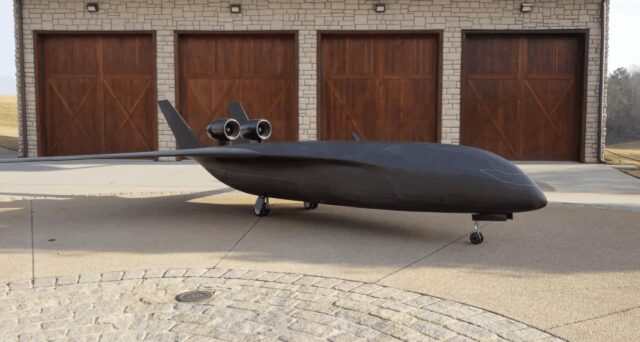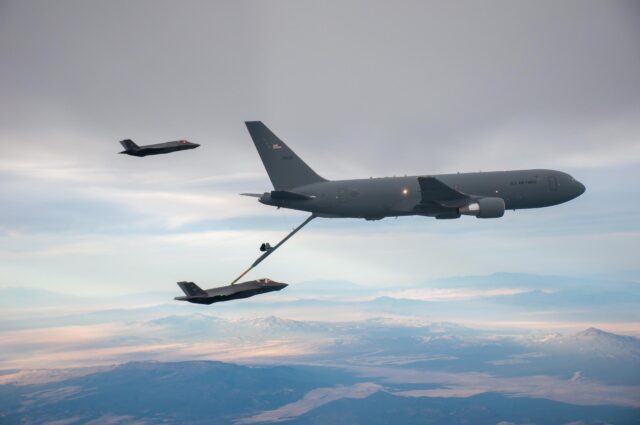Viasat offers $140K incentive for business jet operators as it prepares to sunset Ku-band service

October 6, 2025

Viasat has launched a new incentive programme designed to move business aviation operators from its older Ku-band satellite network to its next-generation JetXP Ka-band service, offering up to $140,000 per aircraft for eligible upgrades.
The offer targets operators currently flying with Ku-band systems, many of which power in-flight Wi-Fi on large-cabin and super-midsize business jets. The company’s Ku-band service will officially end in September 2026, giving customers less than a year to transition.
Announcing the initiative at ISTAT EMEA 2025 in Prague, Kai Tang, Viasat’s Head of Business Aviation, said:
“We want to connect operators of large-cabin and super-midsized jets with more flexible and affordable service plans using JetXP, the most advanced business aviation service we’ve ever offered. These incentives reward long-term loyalty and provide a cost-effective upgrade path that keeps customers in the Viasat family.”
Why Viasat is retiring Ku-band services
Viasat’s decision to discontinue Ku-band reflects both technology and strategy. The Ku network, launched more than a decade ago, cannot match the throughput or coverage of newer Ka-band systems. Maintaining two overlapping satellite constellations and support networks is increasingly inefficient, while demand for high-capacity bandwidth in the cabin continues to surge.
“Expectations around business aviation connectivity have evolved considerably,” Tang said. “Traditional speed-based plans are now outdated.”
Ka-band offers significantly greater capacity and resilience, particularly over data-heavy regions like the Eastern United States, where Viasat has recently quintupled JetXP capacity density. The company says new Ka layers will deliver faster performance for streaming, HD video conferencing and even generative AI tools on multiple devices simultaneously.
What JetXP offers for business aviation
Launched less than a year ago, JetXP merges Viasat’s legacy Jet ConneX and Viasat Ka services under one unified platform. With more than 2,100 customers worldwide, JetXP promises uncapped speeds, higher reliability, and global regulatory approvals, including India and China.

The system runs over Viasat’s expanding Ka-band satellite fleet and integrates seamlessly with existing Gogo Plane Simple Ka, Honeywell JetWave, or forthcoming JetWave X terminals. It also leverages new network management software to dynamically allocate bandwidth, giving business jet users greater priority on shared capacity.
Viasat’s $140,000 incentive explained: what it covers and what it doesn’t
While the $140,000 per-aircraft incentive is generous, it won’t fully cover the cost of a complete Ku-to-Ka reconfiguration for most business jets.
Industry data suggests a full Viasat Ka-band installation — including removal of Ku hardware, installation of Ka terminals and modems, wiring, and certification — typically costs between $600,000 and $650,000 and takes around three weeks of downtime.

That means the incentive covers roughly one-quarter of a total upgrade, depending on the aircraft type and existing equipment. However, operators already flying with compatible terminal hardware (for example, Gogo Plane Simple Ka or Honeywell JetWave) will benefit most, as their retrofit costs are lower.
“We’ve already seen strong uptake from customers,” Tang added, noting that MROs are preparing to handle conversions under “fly-away pricing” agreements.
Viasat’s JetXP upgrade and the growing bandwidth race in business aviation
Viasat’s incentives come as competition in the in-flight connectivity sector intensifies. Rival networks, including Intelsat Flex, continue to support enhanced Ku-band services, while others, such as Starlink and OneWeb, promote low-Earth-orbit solutions promising even faster, low-latency links.
By phasing out Ku and consolidating around Ka-band, Viasat aims to simplify its product line, improve performance consistency, and align with next-generation terminals being installed on new aircraft.
The company’s strategy signals a shift toward fewer, more capable satellite systems — and a push to keep its long-standing Ku customers connected well into the next era of business aviation.
















